Today’s post is not the one I intended, it has been a busy week so not enough time to complete research for the planned subject, however I was in the area of Lamb’s Conduit Street last Tuesday so made a visit to the pub on the corner of Lamb’s Conduit Street and Great Ormond Street. Today, the pub is named The Perseverance, but back in 1985 it was the Sun and had the most brilliant decoration on the rounded corner, so typical of the architecture of 19th century London pubs.
This is the same view in March 2019, a change in name and rather more subdued signage on the corner of The Perseverance.
Lamb’s Conduit Street has two main, historical, landowners. The Bedford Charity (which I wrote about here) owned and developed the southern part of the street, whilst the Rugby Charity owned and developed the northern section of Lamb’s Conduit Street.
The Rugby Charity still owns much of the original land, including The Perseverance with the income from the street being used to fund bursaries and scholarships to Rugby School. (There are still a number of Rugby boundary markers in place, so a future project is to walk the boundaries and look for all the remaining plaques that identified the estate).
The pub retained the name of the Sun from the early 19th century, to the 1990s when the name changed a couple of times, including being called Finnegans Wake prior to the final name change around 2005 / 2006 to The Perseverance.
I have always wondered why pubs change from names that have lasted well over 100 years. I can understand if the pub wants to completely separate from a previous existence, but when the pub continues to serve the same function to the same target market, I would have thought the marketing benefits of retaining a historical name far outweigh the benefits of a new name.
There are many other examples of name changes across London. I wrote about the Horn Tavern in Sermon Lane which only relatively recently changed name to The Centre Page.
The full view of The Perseverance on the corner of Lamb’s Conduit Street and Great Ormond Street.
I did not take a similar view in 1985 – the photo at the top of the post was the last on the strip of negatives so this must have been the end of a roll of film. One of the benefits of digital photography is the almost endless capacity for taking photos.
The photo above shows a different style to the buildings immediately joined on to the pub. These buildings, along with the original corner building date from the early 18th century, however the pub was refronted in the early 19th century to the style we see today.
The building is Grade II listed.
The Perseverance retains the feel of a “local” and has a bar area on the ground floor and a dining area on the first floor. It was still rather empty when I stopped for a quick drink as shown in the photo below.
The Grade II listing states that the pub retains an original cast-iron column, which I assume is the column on the left of the bar.
Back outside, I had a couple of minutes for a quick look around.
One side of the eastern branch of Great Ormond Street has a fantastic array of potted plants lining the pavement.
Whilst the opposite side of the street has a terrace of brick built houses from the original development of the land, looking good in the sunshine.
Along the western branch of Great Ormond Street, a short distance along from The Perseverance is this building with a Blue Plaque.
The plaque records that “John Howard, 1726 to 1790, Prison Reformer Lived Here”.
John Howard was the prison reformer after who the Howard League for Penal Reform was named. Howard was born in Hackney, but spent much of his life in Bedford. He became the High Sheriff of Bedfordshire which came with the responsibility for the county gaol.
He was horrified by the conditions of the gaol and the way in which it was administered, with control basically being down to the way in which the appointed gaolers wished to manage the prison and make money out of those with the misfortune to be held.
His experience in Bedford resulted in many journeys throughout the country exploring and reporting on the conditions of numerous gaols – all of which suffered from the same problems.
His journeys between 1775 and 1790 were described in a book “The State of the Prisons In England and Wales” which provides a comprehensive review of conditions in 18th century goals. The first paragraph of Section 1 – General View of Distress in Prisons introduces the state of the country’s gaols:
“There are prisons, into which whoever looks will, at first sight of the people confined there, be convinced, that there is some great error in the management of them; the fallow meager countenances declare, without words, that they are very miserable; many who went in healthy, are in a few months changed to emaciated dejected objects. Some are seen pining under diseases, ‘sick and in prison’ expiring on the floors, in loathsome cells, of pestilential fevers, and the confluent small-pox; victims, I must not say to the cruelty, but I will say to the inattention of the sheriffs, and gentlemen in the commission of the peace.”
The book records the state of each prison that he visited and Howard’s records of Marshalsea Prison in Southwark are as follows:
Howard’s book The State of the Prisons In England and Wales is available online at archive.org and provides a fascinating insight into 18th century prisons.
I did not have time to explore much further along Great Ormond Street, so I backtracked to The Perseverance to head back down along Lamb’s Conduit Street, which deserves a dedicated blog post, however one building just a short distance from the pub has some interesting decoration above the first floor windows.
I could not photograph from directly opposite as the branches of a tree partially obscured the view. Detail of the first floor decoration is shown in the photo below which consists of a date along with a sheaf of wheat, tied with rope, with four hands pulling on the rope.
The symbol is of the United Patriots National Benefit Society which was founded in 1843 with offices here in Lamb’s Conduit Street, as well as other offices and branches across London and the rest of the country.
The society was one of a number of benefit societies to which members contributed a regular subscription and were then able to call on financial support in times of hardship. The sheaf symbol was used extensively by the society on their buildings, certificates of membership, documentation and badges.
Like many 19th century societies, the United Patriots National Benefit Society appear to have enjoyed members meetings in pubs which seemed to have consisted of entertainment and toasts (and probably lots of beer). An account from the Islington Gazette on the 4th November 1884 reads:
“The members of the Caledonian-road branch of this society celebrated their fortieth anniversary by a supper, at the ‘Prince of Brunswick’ Tavern, Barnsbury-road on Thursday evening last. Subsequently, the members having disposed themselves for the evenings entertainment.
The Chairman (Mr. W.E. Beer), in a few prefatory remarks condemning the recent disquieting rumours in the press concerning the Navy, proposed the ‘loyal and patriotic toasts’ which were drunk enthusiastically.
Mr G. Coel (the branch secretary), in responding to the toast of the evening, said that, up to the end of last year, the members on the books numbered 95. the receipts for 1883 amounted to £116 14s 11d, and the disbursements £114 17s 7d leaving a balance of £1 17s 4d in their favour, he regretted not being able to lay before them a better statement of affairs, but owing to the unfortunate prevalence of sickness during that time, there has been an extra call upon the funds; but it was, at the same time, gratifying to know they have been more than able to meet the demands made, without applying for aid from the mother society. He concluded by thanking them all for their courtesy and kindness accorded to him during his connection with them, extending over seven years (Cheers).
The proceedings throughout were enlivened with songs by the company, which separated after cordially approving votes of thanks to the Chairman and the host (Mr. Wilson).
I suspect those who had been able to call upon the society during times of sickness were the fortunate ones, with those not able to be members having very little to fall back on.
I should not be surprised as I have been walking London for decades, however it is always brilliant how much history can be found within a very short distance from a specific point. I went to find the pub which had a very colourful decoration in the 1980s and also found one of the key early founders of prison reform and the home of one of London’s benefit’s societies. Digging deeper there is the history of the Rugby Charity which received the original donation of land and has owned, developed and managed much of the local area since, and before that one of the early water supplies to London and the land owner that gave the street its name.
Hopefully subjects for future posts.

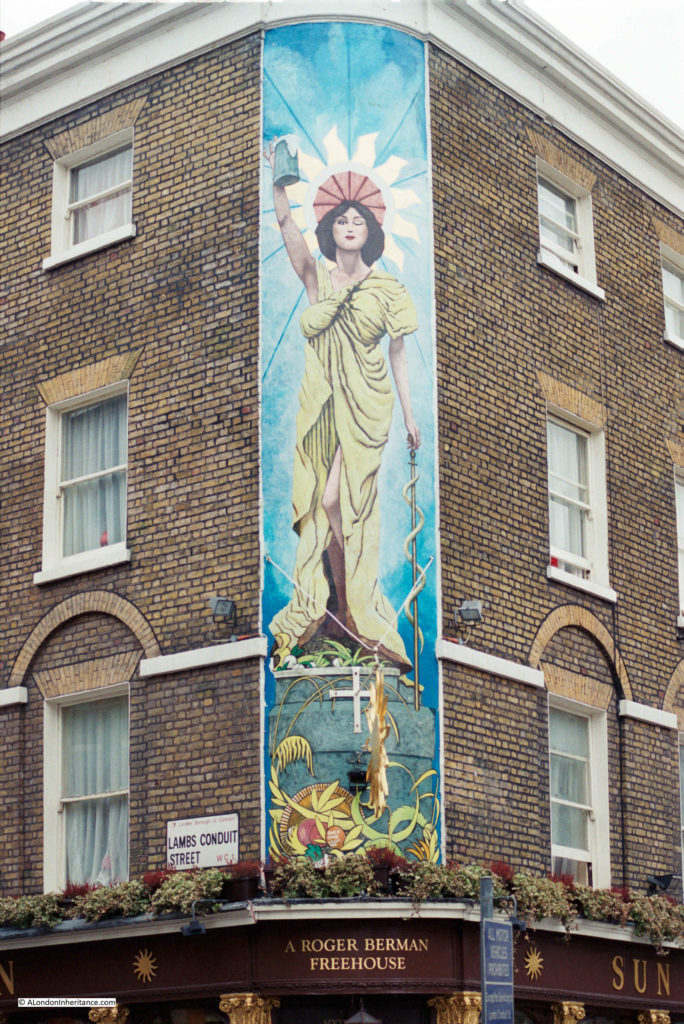
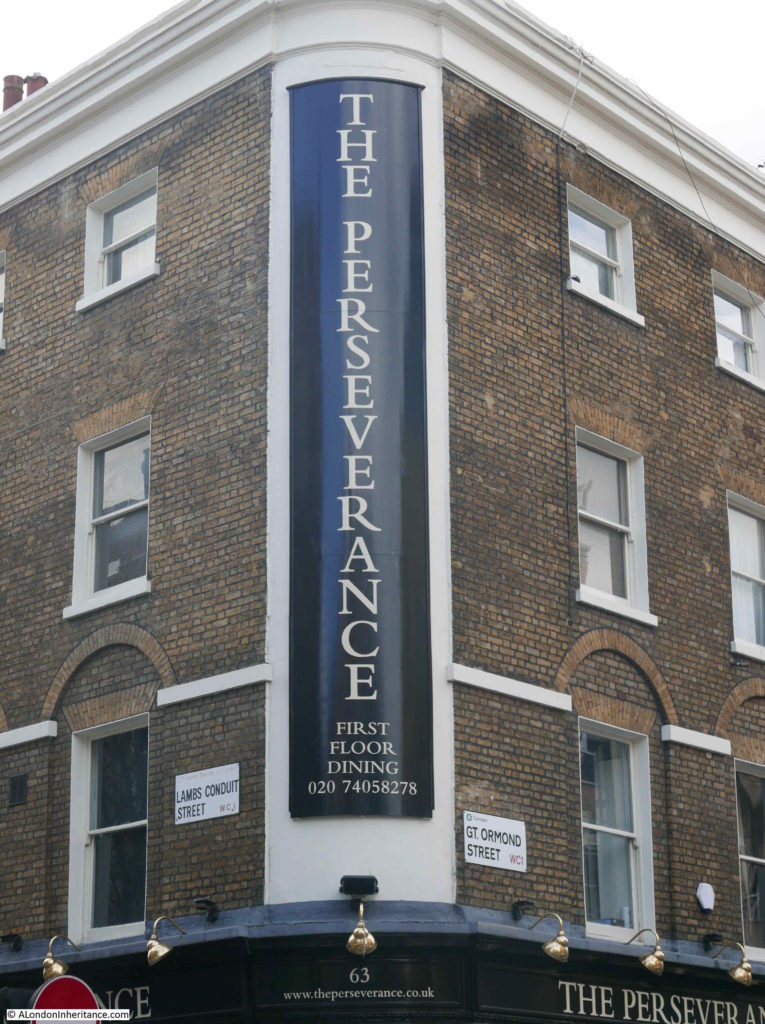
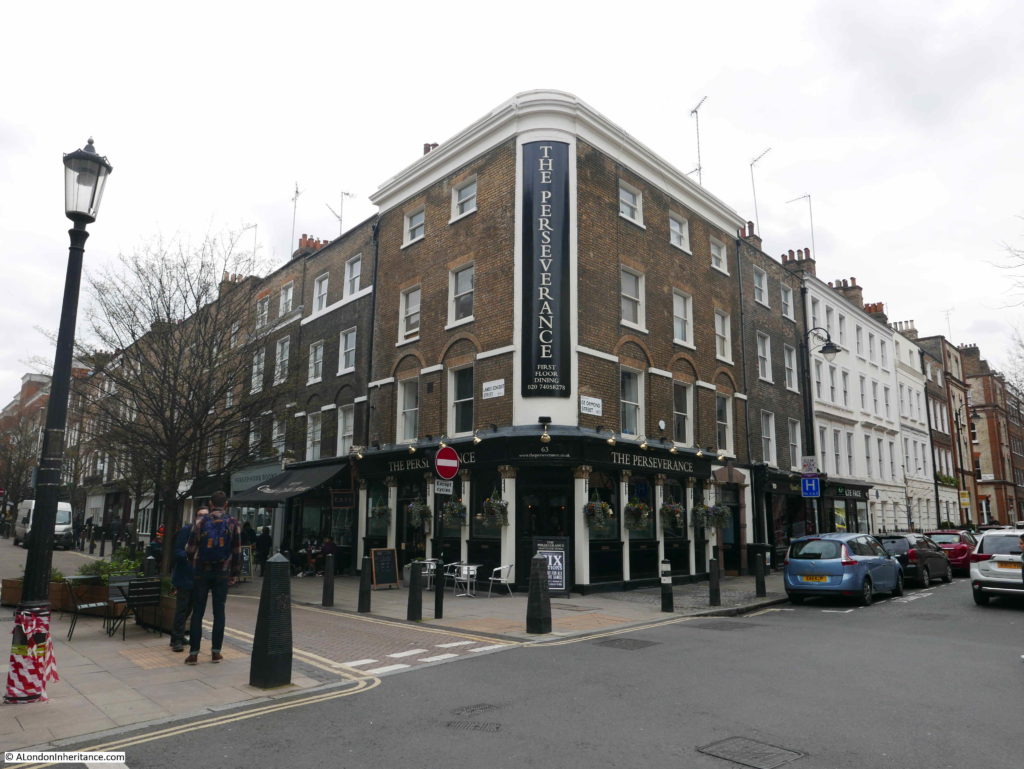
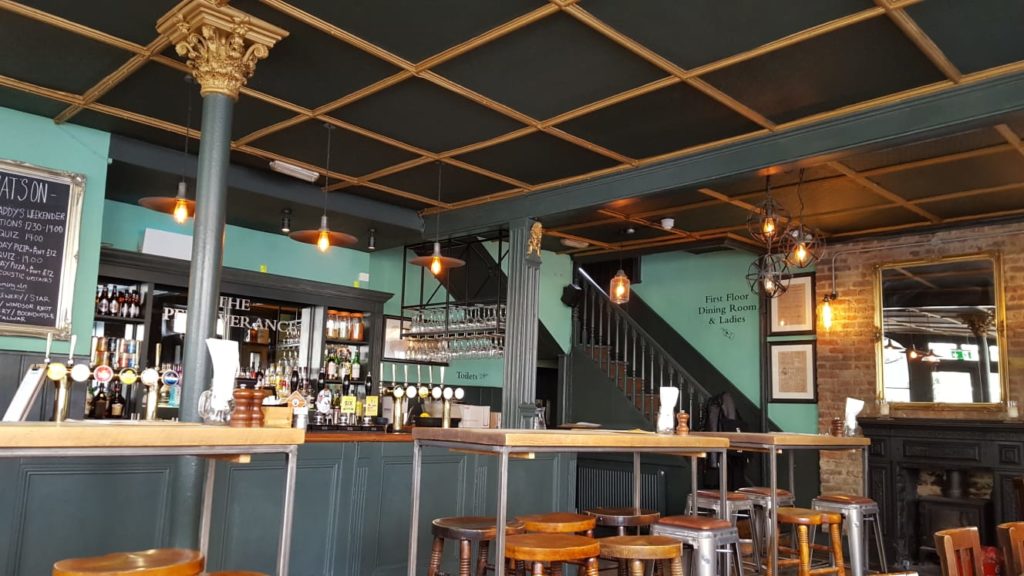
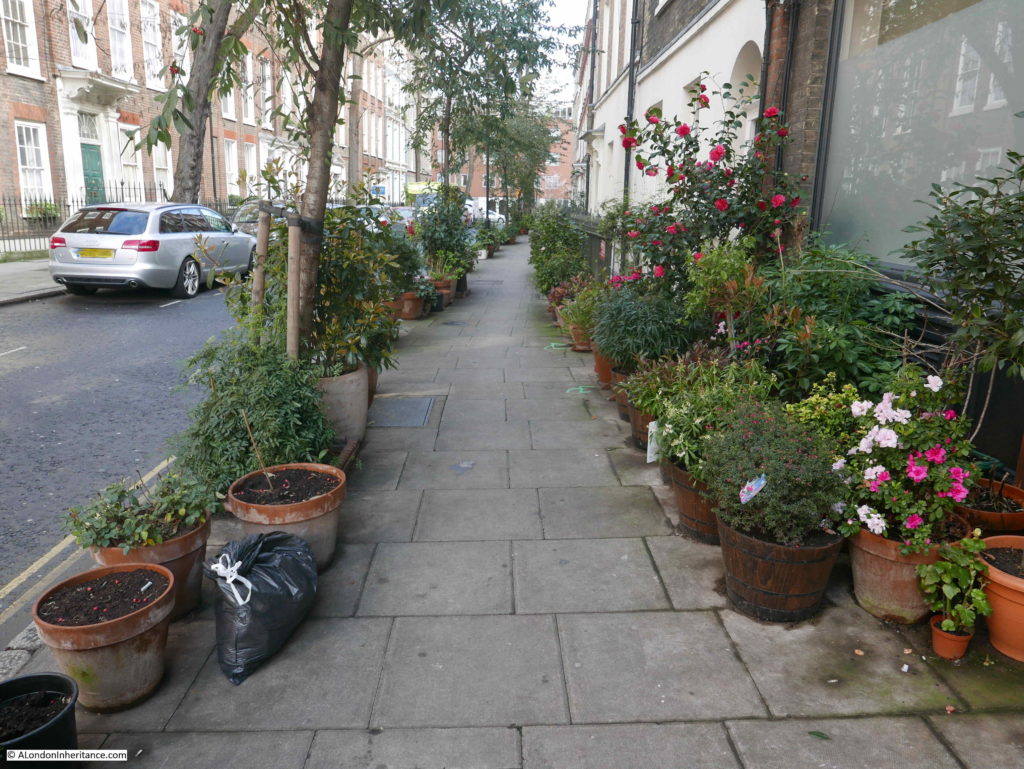
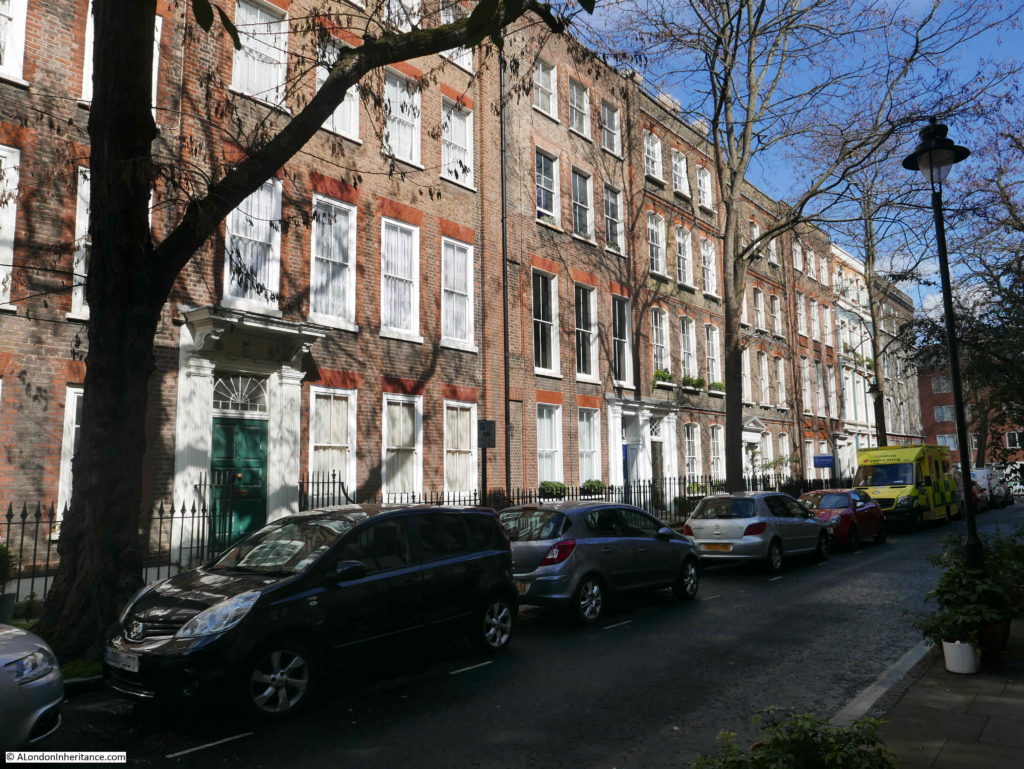
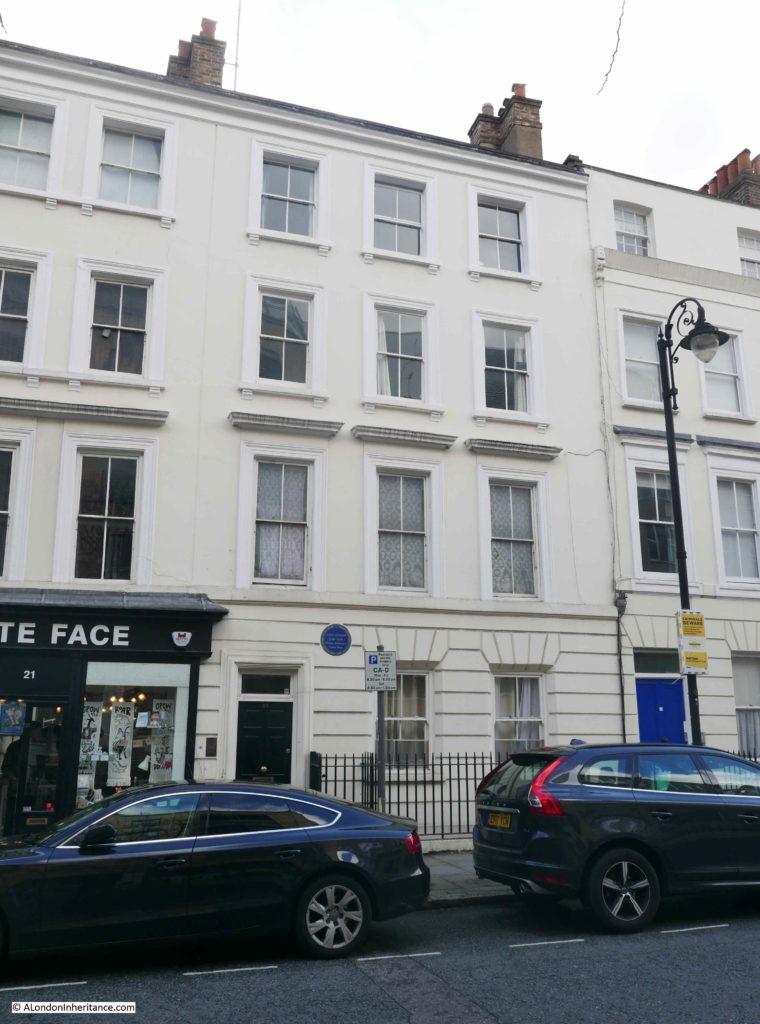
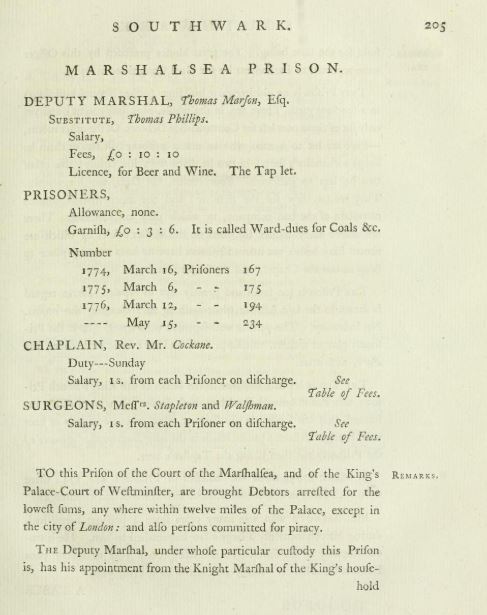
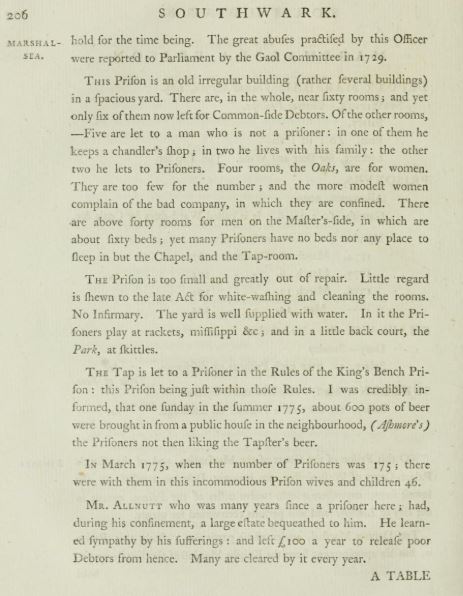
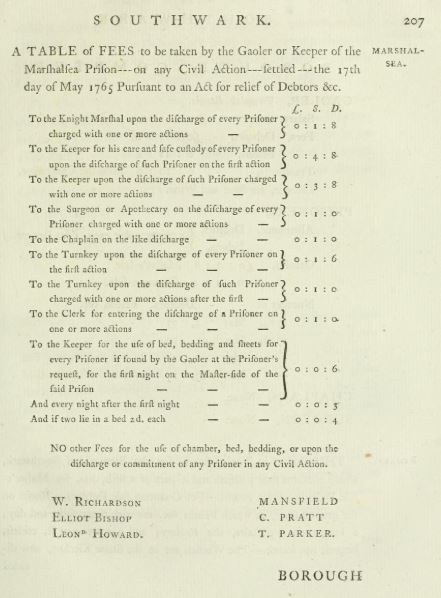
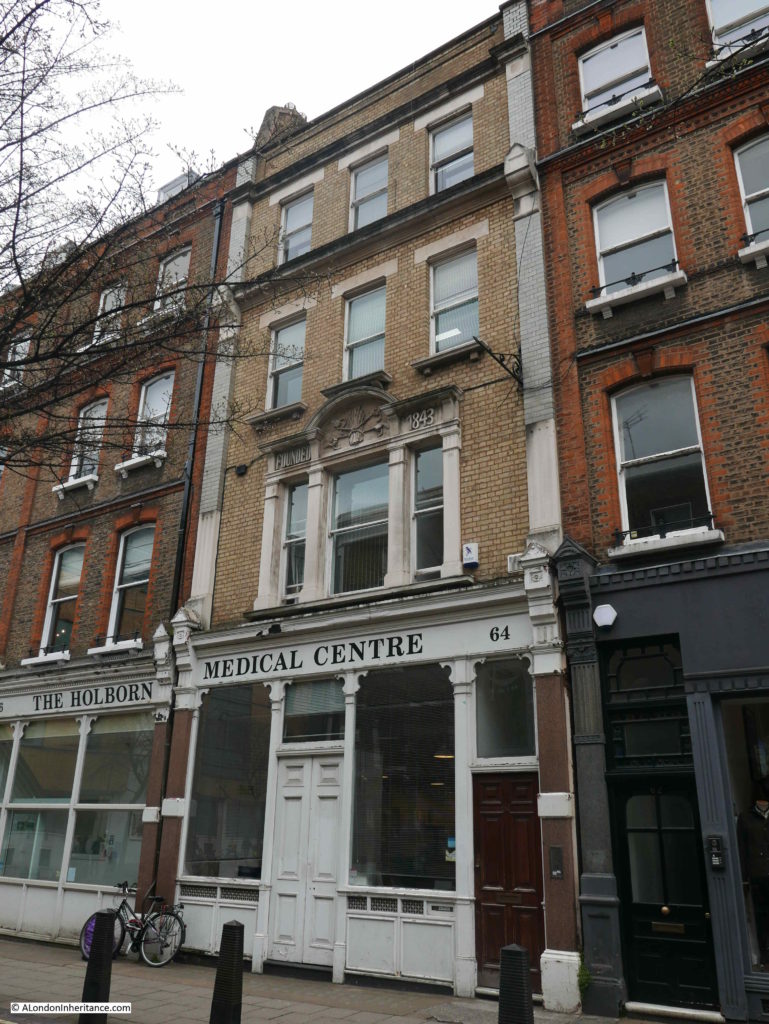
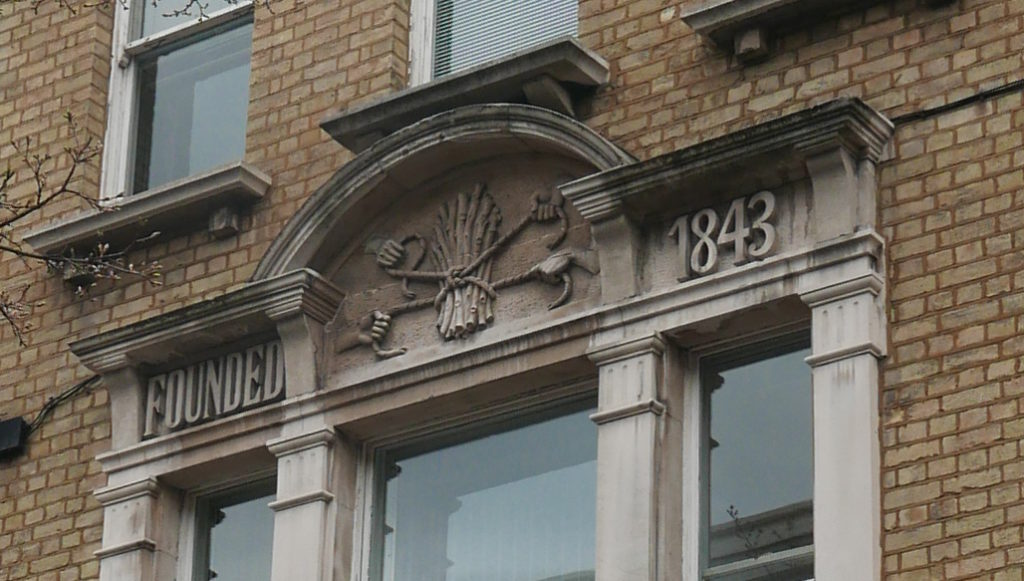
Interesting that you talk about the Bedford ‘Charity’ and the Rugby ‘Charity’, and makes me wonder if, like the decoration on the pub itself, language use has changed or if, as I suspect, someone’s PR machine has been at work. I have lived and worked in these streets for more than 50 years, and prior to my being here and until quite recently these were known (correctly, I think) as the Bedford Estate and the Rugby Estate. The name gives the game away I think – these are both large areas of London and Rugby and Bedford are property owners and landlords. While both do some charitable work, the main job of both is to earn money for the owners and for them both to present themselves as charities is more a matter of obfuscation than anything else. Money is the name of the game.
Very good point. Eton College also own large parts of cinner North London around Primrose Hill. They too are not a charity despite the school having that status meaning they pay zero tax. Even the ‘ impartial ‘ BBC published a story about the Bridges Trust implying that they were a sort of charity. Yes they do maintain some of the bridges of London but it is not primarily a charity and has huge assets which are used to make profits. The line between PR and news is often blurred when it comes to these institutions.
Once again it feels a bit spooky about how these posts intersect with my experience of London…
Two or three years ago I was walking back to Euston from somewhere in the City.. I can’t remember where I’d been – but it was around 1600 and I’d missed lunch.. and it was a hot day and I was getting faint with hunger…. and the next pub I came to was the Perseverance. I went in, had some peanuts and a pint – and that restored me to complete the short onward journey to Euston. I enjoyed the pub, its decor and ambience (and its beer) and resolved to go back. But… I didn’t remember (a) the name or (b) exactly where it was….. So for a couple of years, off and on, I’ve been trying to find it again – which I did just a couple of weeks ago. It is quite a co-incidence for it to then to pop up in this wonderful blog.
Fascinating and very informative post.
Is there any further information on the “Roger Berman Freehouse” Estate? Seen on the first photograph.
My name is Roger Berman, I bought The Sun in March 1977 and sold it in May 1987. Many very happy years are my enduring memory of !ambs Conduit Street and the wonderful people who live there.
The Sun was a great success literally attracting drinkers from all over the world.It made my fortune and I consider myself very lucky to have been the owner and Licencee.
RB 08.2021
Thank you, Roger, for your post. The Sun is a pub I’ll always remember. It seems wrong to say this about a pub with such an excellent range of real ale but what sticks most in my mind is that it was the first place I’d seen and drunk Grolsch in those fliptop bottles and also that your pasties were superb. So thank you for such wonderful memories.
Roger can you confirm exactly how many hand pumps your bar had, as it was the thing of legend that I still tell people about. Thanks in advance, your Sun was a formative part of my youth.
Roger,
I was a visiting Senior Registrar in Anaesthesia and Intensive Care, at Great Ormond Street, in 1980-81. When the day’s work in the cardiac theatres was over, the team would adjourn to The Sun for a few relaxing bevvies. The ales and ambience were just terrific.
Sad to see The Sun apparently reduced to serving fizz. I remember it from the late 1970s, when it was a famous source of real beer (not then so prevalent in London); it had a splendid line-up of19 handpumps on the bar. I can’t see one in your picture.
Enough to drive me to drink! Please keep these excellent postings.
@Mike – your eyesight might be better than mine – but I think I see four handpumps on the bar. When I was last in I seem to remember the beer being real and also quite acceptable… although i cannot remember what I had.
Mike, in the early to mid eighties, they had many more than 19 – at wild guess, I’d say at least 40
I also remember The Sun from the mid 80s when I worked nearby. We went there often for a liquid lunch. 35 pumps as I recall, and am glad I wasn’t mistaken. A pint of Breakspear’s was 76p. It had a sister pub called The Moon, can’t remember where. The Perseverance is ok, but can’t compare with that sort of history. No pub could, to be fair.
Remember it too. There was a view that they had too many beers to be able to keep them all in best condition, but the sheer number was extraordinary. And of course the Lamb just steps away.
My husband has worked in this area since the early 1980s and tells me that The Sun had an appropriately named sister pub, The Moon, at the junction of New North Street and Boswell Court. It is no longer a pub though.
As usual a very good read on a very interesting part of London.
Really sad to lose that remarkable, joyful corner painting, even if the new sign is more in keeping with the new image the area wants to convey. Does anyone know who the artist was?
I have never seen a pub with more ‘real ale’ handpumps than The Sun. I seem to remember they had about a hundred – OK, my memory might be inflating it a bit, but it was certainly a huge number, more than I have seen in one pub before, or since. I lived in Devon at the time, and my friends and I used to come up to London purely to go to The Sun. Once, we even hired a car, drove from Tavistock to The Sun and then after several drinks, drove back again. It was ‘Mecca’ for the real ale fan, and I’m sure we’ll never see the like of it again. Absolutely legendary place.
Hallo,
Always enjoy reading your posts,very interestind and
informative.Have you ever investigated Whitechapel
and its connection with Jack the Ripper ?
Best Wishes
Terry Cremin
I have a jigsaw puzzle of the interior of The Sun Inn – it looked a glorious place back in the day!
Happy to send you a picture of the jigsaw if you like, you could perhaps add it to this excellent post if you wanted to.
Neil, yes, it would be fascinating to see this. I suspect a jigsaw puzzle of a pub interior is rather unusual. If you do have a picture and can e-mail (address on blog on the right side) – thanks
In common with several posters here I remember the huge selection of real ale in the Sun in the early 80s. I studied in London and this was my favourite pub by a long mile. Is my memory correct in that their pasties were pretty good too (for London anyway)?
We live in Cardiff but we rented a flat in 20-26 Lambs Conduit Street March 2000 – August 2001 as my 16 year old daughter had her first west end break. Before picking this flat we viewed numerous flats and another in Lambs Conduit Street (above the funeral parlour). We picked 20-26 as it had a terrace at the back of the flat. We have lovely memories of the street and used to have our Sunday lunches in the Lamb pub at the bottom of the street. My son, who was 3 years old at the time, went to Coram Fields Nursery and we spent many a happy hour in Coram Fields itself. We would return in a heartbeat but would have to win the lottery first
This is a really interesting article as I worked here in 1982 when it was the Sun (big OE from NZ). The Guvnors were Rob and Elsa from South Africa. They were very keen on polishing and cleaning. There were two lagers, two stouts, and maybe 15-20 ales arranged around the bar. The owner was Roger Berman as per the sign who also had the Moon around the corner. I remember it as white ceiling and dark wood paneling. Also worked at the Polar Bear near Leicester Square which was “interesting”. Thanks!
In the early 80’s I worked for a distributor of ales called B&W Beer. The ‘B’ was Berman and the ‘W@ was Wollard. We used to deliver to The Sun, Moons and The Lamb in Lambs Conduit Street. The Sun always had a good (and large() selection of ‘real ale’.
The landlord was a big South African ex copper that I remember.
As I type this, at 8.30 in the evening, it is exactly 40 years ago today that I and my brother sat on the pavement outside the Sun, celebrating West Ham’s cup win over Arsenal.
The pub had been recommended to me by a work colleague at Wigan DHSS, precisely because of its real ale stance. All in all, it was a beautiful evening.
I had the pleasure of working at The Sun for 2 1/2 years from ‘89-91. It was time that has given me a 1000 stories ranging from drunken opera singers, staff sweeping the street in their underwear, German film crews, film, tv and sports celebrities, and the late Princess Diana. At one time a local resident drove his car through the open double doors, stopped at the bar and ordered a pint. Wonderful place with a rich local history.
Looking forward to reading the book, Dominic!
Pimlico Pete
My encounter with The Sun. Whilst living in London in the late 1980′ s, one of many things that I acquired a fondness for was the many beers and ales that were available. One that I was fond of was Theakston’s Old Peculier, a dark porter or mild like brew. I had only found it bottled. Late in my residency there, I began a quest to find the brew on tap in a London pub. Mind you, this was prior to the internet, so it was not as simple as searching Google. Finally at my stay’s end, I learned that it was on tap at The Sun! So as it was, on my final day before returning to USA, I trekked to Lamb’s Conduit Street, and found The Sun. Inside I walked; the bar had an array of something like 20 beers on draught; incredible! And there was the pull for Old Peculier! Success! I ordered up my pint and found a seat at a table outside with a couple of young ladies. And after all of the searching, I learned that actually, I preferred it bottled after all! But the adventure and discovery was well worth it. So whatever they call the pub nowadays, it will always be The Sun on Lamb’s Conduit Street to this Yank.
I think the only time I’ve drunk draught OP was in a pub in York in about 1987. I remember it being very good and worthy of its reputation as a strong beer to be wary of. I also enjoy the bottled version.
Maybe it was renamed The Perseverance in honour of your efforts to find OP on draught??
HA!!! Brilliant!
I worked just around the corner (Adastral House) from the Sun in 81/82. I gave up trying to get a decent pint there as all were consistently in very poor condition. I transferred my loyalties to the Moon, limited choice but far better, where I watched Botham and Willis destroy the Aussies on 21 July 81. I left the Moon very happy, very drunk failing to return to work that day or the next! Does anyone know where the Moon was?
Back in 1987 there was also a large mural at the back of the Sun featuring the publicans and various members of the public. Sadly lost I believe.
I also used to work at the Sun around 1986/1987. I don’t remember how many taps… too many for my poor Spanish right arm, though! I remember a lovely Scottish coworker as well as the cook… I also used to live-in, on the second floor. Great times…
My Grandfather, George French, ran the Sun Inn in the 1930s. He had a liking for the drink and eventually had his licence withdrawn when he ended up in police cells. My mother told me she used to visit a nearby sculptor but I never found out who he might have been.
My Grandfather was licensee throughout the war years retiring circa 1955, it was a Taylor Walkers pub. We often stayed there with the gas street lighting and bomb site opposite.
Hi Rodger,
Back in the early to mid 80s i had the pleasure of delivering to The Sun and also providing the house Beer Avocate.
I have many memories of the pub both social and business.
My greatest memory is of the day when you introduced me to George Best.
Rob Walster, former director of
Crouch Vale Brewery
Back in the late 1970s / early 1980s I was an infrequent, but enthusiastic, visitor to the Sun Inn. I seem to recall it prided itself in offering the largest selection of real ale in London at that time.
I was there about the same time as you, working in Adastral House just around the corner. I believe that has been knocked down…just as well, it was a horrible building to work in…….very depressing. It had a central lacuna running up the building: birds would get get caught inside it and fly around and around until exhausted fell down past my internal window. The first time that happened I looked out and own to see the floor littered with corpses! Anyway, I digress, yes it did pride itself on the range of beers. Regrettably it did not seem to pride itself on their quality. I went in there twice and was served beer which was going off…I never went again but the experience inspired me to start a brewery which I did in 1982, Pilgrim Brewery. It was named after Pilgrim’s Way as it was founded about halfway along the “Way” in Woldingham
The Perseverance
Peter Bodnar
Posting publicly
Food (Beta)
Service (Beta)
Atmosphere (Beta)
I am disappointed today as I was happily sitting supping my beer awaiting my family to arrive to celebrate my 65th Birthday to find me sitting outside in the rain, I told them a lady asked me to get off my seat as she had booked this table at 5 pm which was 17 25 when she said that, I of course happily got off the table and sat outside. When my family arrived we looked in at 17:35 to find she had no guests there, so we went to the Lamb Pub opposite where they have no table restrictions. I live in Great Ormond Street just 4 doors down and we all will not be using this pub ever again with such rules that clients who book tables don’t even turn up to on the allotted time slot and push paying customers out.
The Sun was our regular haunt as a student in International Hall, 1976-1978. Felinfoel was our usual order. I’ve not found it anywhere since!
We returned to celebrate the end of finals in 1979, which involved rather too much Bishops Tipple.
I worked at the Sun and lived above its sister pub the Moon (RIP) for about a year in1983/4, starting in the bar and then learning the cellar.. back then there were 20 hand pumps , 17 of those were constantly rotated from a huge list of Real Ales from, according to the Large Black Board on the wall, 69 different Breweries , 1 was Brakspears , ! was the Sun house ale (which came from Brakspears & I suspect was the same beer with a different badge) & a cloudy cider … Oh yeah there were 2 fizzies on tap for those with no appreciation of real beer. From memory the cellar was larger than the floor above, stretching under Gt Ormond St & there could be about 30 different ales in more than 60 (9, 18 & 36 gallon) barrels on stillage at the same time. Learnt more about looking after Real Ale in 6 months than most do in a lifetime & would have been there longer but for a falling out with the then manager Rick, a bombastic pisshead, unlike the owner Roger Berman, who was a gentleman & man ahead of his time owning pubs specializing in Real Ale in the 80’s.